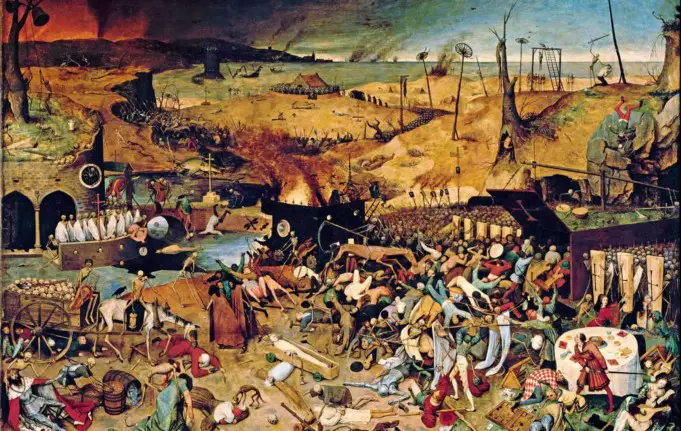The Black Death that took place in the 14th century is one of the most well-known occurrences in history. When historians talk about “the plague,” what they are usually referring to is this epidemic of bubonic plague that was caused by the bacterium known as Yersinia pestis.
In his literature published in 2018 titled “The Black Death, 1346-1353: The Complete History” Ole J?rgen Benedictow estimated that about 50-60% of Europe’s population died during the occurrence of the Black Death, a proportion that is higher than the often-cited “one-third” of Europeans that were lost to the plague of a disease.
Less well-known is the fact that the said plague continued to hit Europe, the Middle East, and farther for the next four hundred years returning every decade to two decades.
The name “Black Death,” according to Benedictow, is actually a misunderstanding as it turns out to be a mistranslation of the Latin phrase ‘atra mors,'” which has a dual meaning of both “terrible” and “black.”
There is no apparent correlation between the now famous name and the symptoms of the plague that was experienced by victims while it existed.
When did the Black Death begin?
The exact date or year the Black Death began is still unknown, but history has it that black death swept through Europe and the Middle East in the years 1346-1353. Yet, the disease may have started several decades before the mentioned date in the Qinghai Plateau of Central Asia.
The period of repeated plague epidemics that happened between the 14th and 18th centuries is identified as the Second Plague Pandemic. The First Pandemic actually occurred in the sixth through the eighth centuries A.D., whereas the Third Pandemic existed roughly between 1860-1960.
According to Benedictow, the black death was “the first disastrous wave of disease outbreaks” of the Second Plague Pandemic. Only a few of the later outbreaks that took place in the Second Plague Pandemic were as destructive.
Nonetheless, they keep on killing 10-20% of the population with every recurrence.
How did the Black Death affect Europe?
As shocking as it may appear to modern audiences, the people who existed in medieval and Early Modern times grew to become accustomed to the plague and found ways to take this periodic decline inn population in stride.
Scientists and doctors worked together and separately to understand and handle the epidemic better, especially while it came to the prevention of its arrival and spread in their environments.
Many notable developments in the history of modern medicine and healthcare occurred as a result of this plague: the rebirth of open surgery and dissection, the discovery of how blood circulates, as well as the formulation of public health measures.
It remains unclear why the Second Pandemic came to an end in Western Europe. Still, it continued to strike in other regions like Russia and the Ottoman Empire all the way into the 19th century.
When did the Black Death come to an end?
The Great Plague of London that took place in 1665 was the last notable outbreak that was recorded in England, and the plague also seems to have vanished from Spain and Germany after the 17th century.
The plague of Marseilles, France, that took place in 1720-1721 is known to be the last significant plague outbreak that occurred in Western Europe.
Some historians have argued that public health had evolved well enough to put an end to the spread of the plague, mostly via the effective and systematic use of sanitary legislation.
Some others point to the evolutionary changes in rodents, humans, or in the bacterium itself. Still, none of these claims appear to be holding up to recent findings in plague genetics.
However, what is apparent is that during the four centuries between the Black Death and the vanishing of the plague from Europe, scientists and doctors worked endlessly to explain, contain and offer treatment for this scary disease.
Please leave a comment below.












